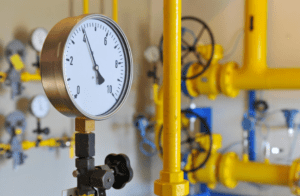
Methane (CH4) is the main component of natural gas. When it is released into the atmosphere, it contributes to global warming. In fact, it is the second most important greenhouse gas emitted after CO2 due to its Global Warming Potential (GWP). Reducing these emissions will be critical to avoid the worst effects of climate change and to improve air quality.
Currently, methane concentration in the atmosphere is around two-and-half times greater than preindustrial levels according to the International Energy Agency (IEA).
It has been shown that the energy sector is one of the main sources of methane emissions. According to current estimates, 54% of methane emissions in the energy sector are fugitive emissions from oil and gas facilities, 34% fugitive emissions from coal sector and 11% from residential and other final sector. Thus, preventing these leaks is one of GERG research priorities. With the aim of defining a consistent, transparent, reliable and accurate method for methane emissions estimation, the ‘MEEEM DSO’ project was launched -See link to the project page below.
Once in the atmosphere, methane disperses rapidly, making it difficult to locate unknown leaks. Measuring them is essential in order to tackle them efficiently. One way of measuring these emissions can be done by using the so called ‘Top-down’ methodologies. To improve understanding of the implementation of these technologies, GERG launched a collaborative multi-phase project – consult the link below of phase I to know more about it.
Moreover, in order to facilitate discussion on reducing methane emissions, there is a GERG working group that is focused on identifying knowledge gaps and give recommendations on how to improve the monitoring, detection and measurement of methane. This information is presented on the GERG roadmap for methane emissions that was launched last December.
Check these links for more information about more projects related to methane emissions in which GERG is working on: